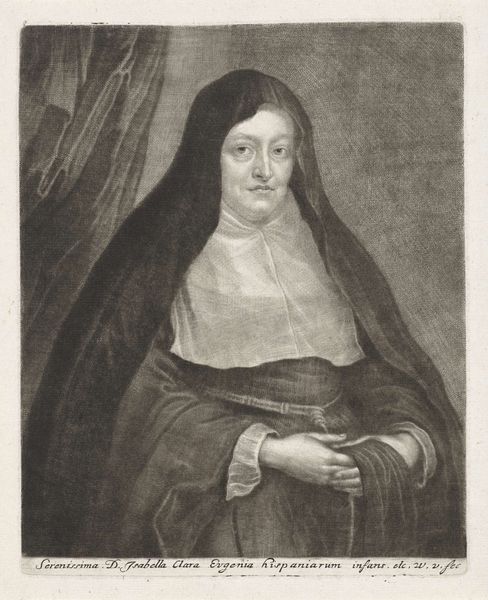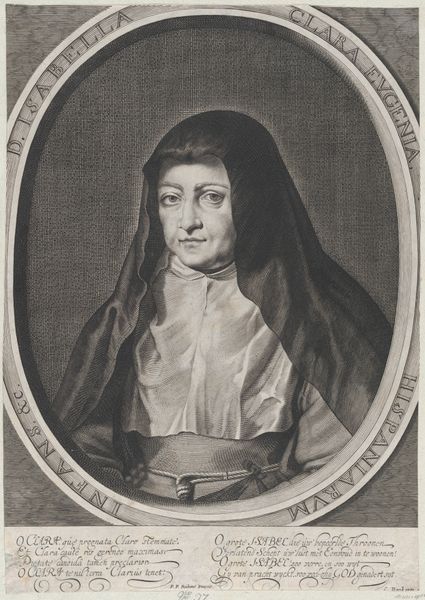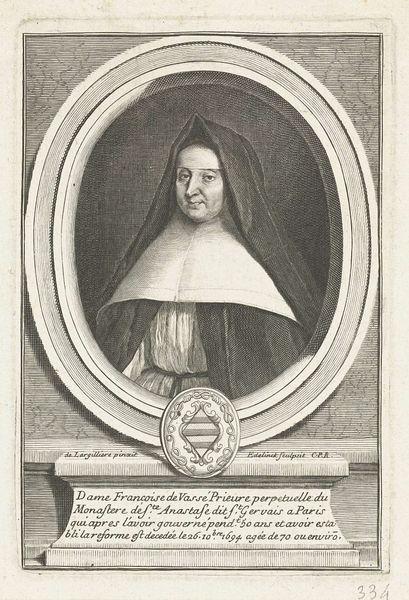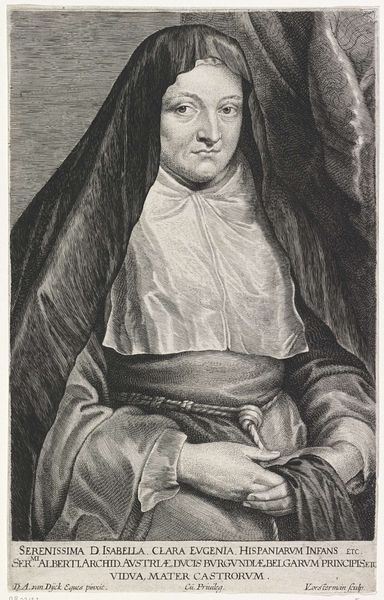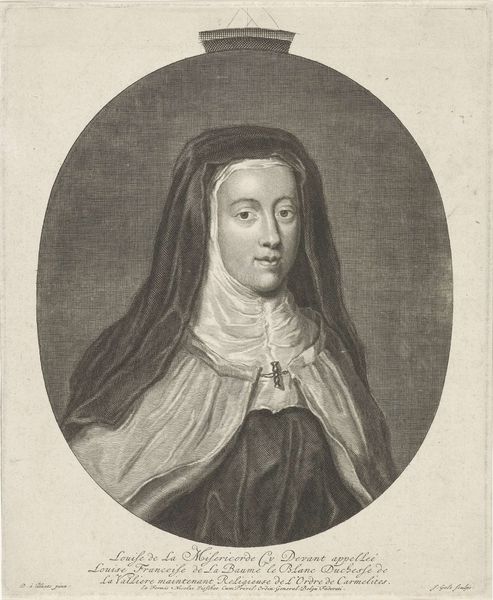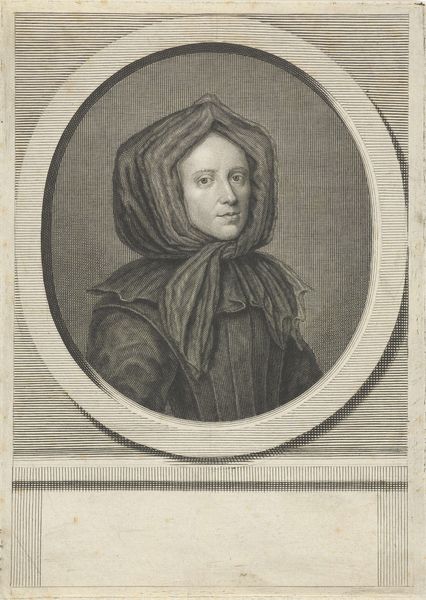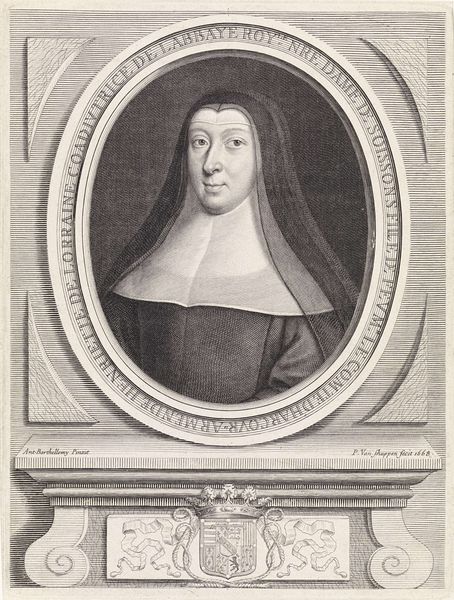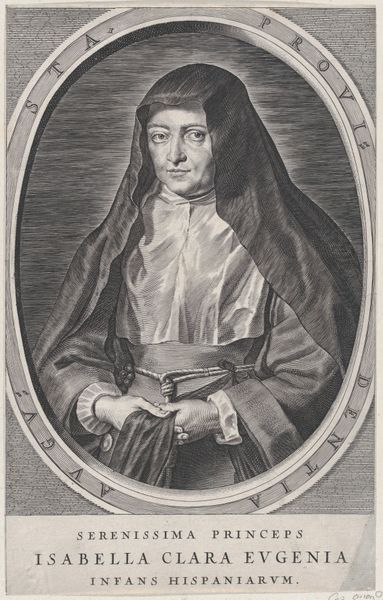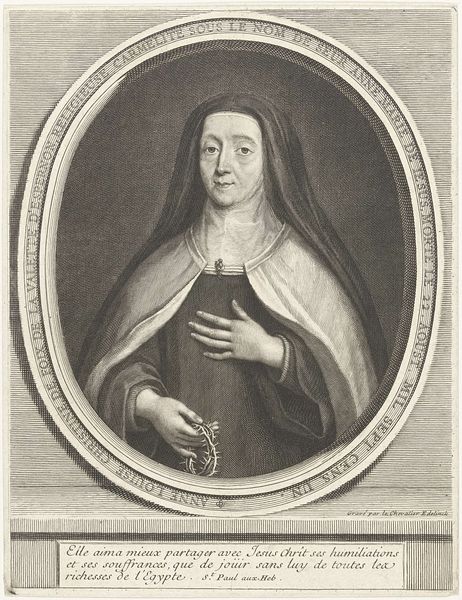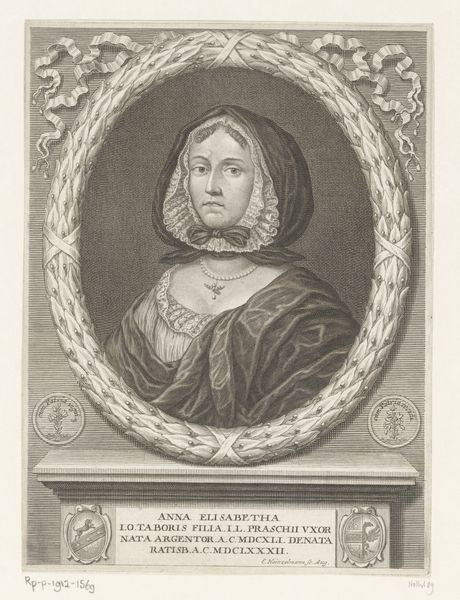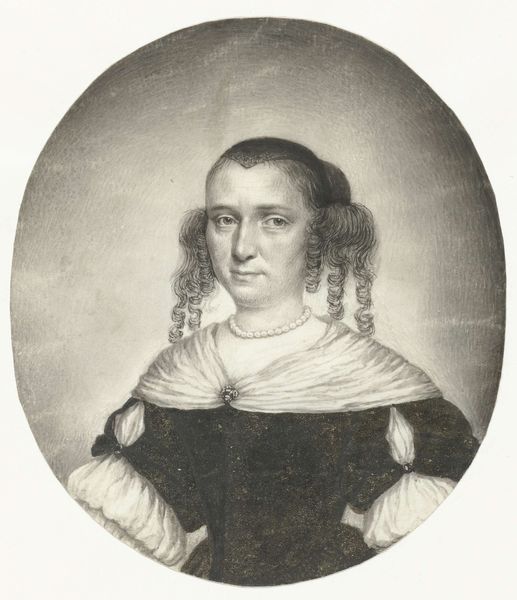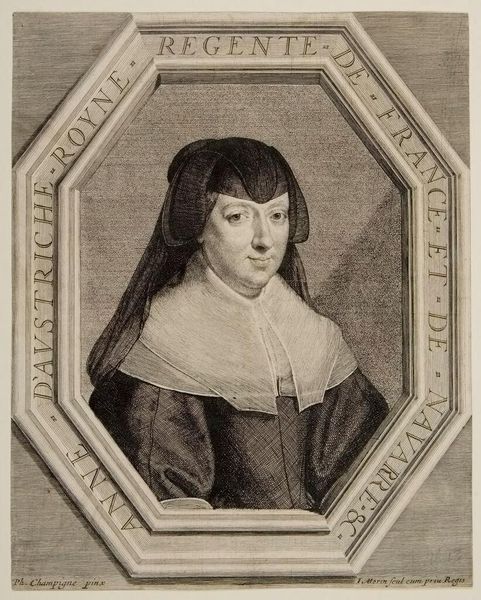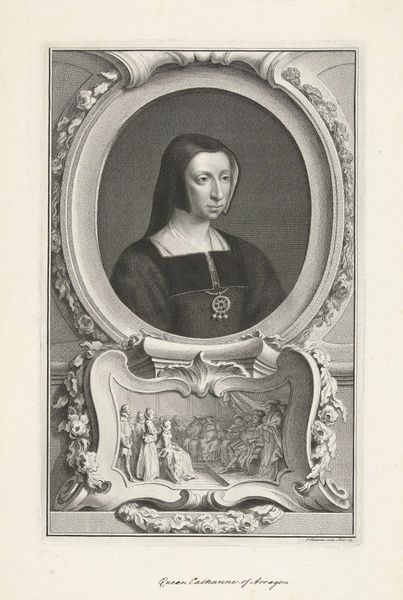
print, intaglio, engraving
#
portrait
#
baroque
# print
#
intaglio
#
line
#
history-painting
#
engraving
Dimensions: height 426 mm, width 300 mm
Copyright: Rijks Museum: Open Domain
Curator: Here we have Willem Hondius's 1633 engraving, "Portret van Isabella Clara Eugenia, infante van Spanje," part of the Rijksmuseum's collection. It presents a formal portrait of Isabella. Editor: It’s somber, isn’t it? The stark contrast between the dark veil and the white collar, the controlled line work—there's a formality that feels almost…restrictive. You immediately notice how much dark ink was laid down. Curator: Well, Isabella was a significant figure. She ruled the Spanish Netherlands during a turbulent period. This print likely served to project power and piety, reinforcing her image in the public sphere. Prints were key to circulating political imagery. Editor: Absolutely, but the making of the print also tells a story. The intaglio process—etching and engraving lines into a metal plate. All that meticulous labor involved in reproducing her image for wider consumption is so intriguing. Consider the material costs and craft skill needed. Curator: Indeed. The text surrounding the oval frame is interesting, too. The phrase "UT SERVES VINCIS," meaning "that you may conquer by serving." It positions Isabella as a servant leader, reflecting the political ideologies of the time. Plus, the inscription states Hondius made this likeness after Anthony van Dyck, highlighting the collaborative and reproductive aspects inherent in printmaking. Editor: Precisely! Hondius isn’t simply creating out of thin air. He’s re-presenting Van Dyck, transforming paint into line, a unique kind of material transformation with its own specific visual language. And consider the distribution networks at play here! Curator: It makes you think about how the consumption of such imagery shaped perceptions and contributed to the construction of Isabella’s legacy. Were these affordable for commoners? Or primarily circulated within elite circles? The dissemination matters greatly. Editor: The deliberate control in the lines to create a powerful ruler's image speaks volumes. Curator: Hondius' print offers us a window into the intersection of art, power, and politics in 17th-century Europe. Editor: It's amazing how analyzing the ink and labor pulls the portrait away from sheer symbolism and toward the world of social and material processes, doesn’t it?
Comments
No comments
Be the first to comment and join the conversation on the ultimate creative platform.

